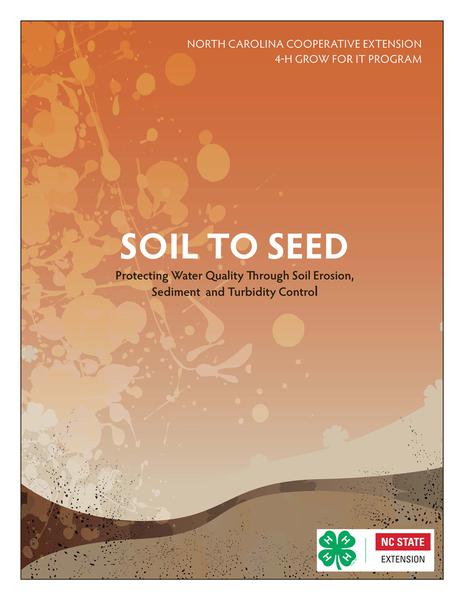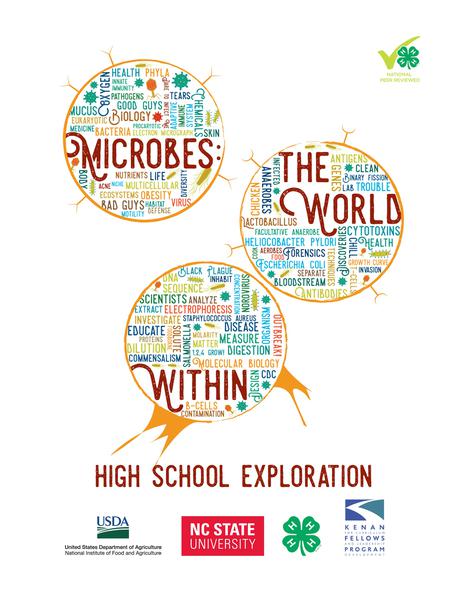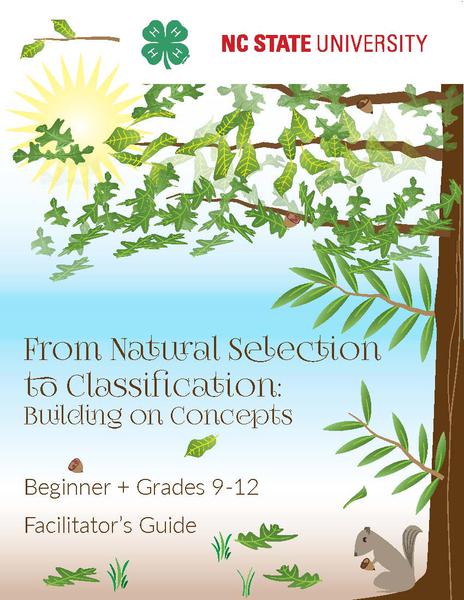Multiple Grade Levels - High School
Soil to Seed
From the food we eat, to the water we drink, to the places where we live and play, soil erosion and sedimentation profoundly affect our everyday lives. The loss of soil from our landscapes and its deposition into our waterways, reduce the ability of the land to be productive in supporting plant growth and the capacity of the water to nurture aquatic habitats, host recreation and have municipal usefulness. Erosion is a natural occurrence, shaping sand dunes, creating river deltas, or carving out enormous rock features like the Grand Canyon. This curriculum focuses on the accelerated processes of erosion and sedimentation that transpire as a direct result of agricultural and construction development activities. It is through abuse that our waters and soils are becoming increasingly compromised. With careful management of the soil, however, we can preserve water quality and keep our soil in place for future generations.
Soil to Seed is designed to cultivate high school aged-youth in understanding the principles of erosion and sediment control. Using the 4-H Experiential Learning Model, youth delve into hands-on lessons, working together to solve problems and share reflections on what they learned. The curriculum begins with the fundamental mechanics behind erosion and sedimentation, then teaches students how to assess physical spaces for evidence of these processes and eventually builds their knowledge base of how to manage and control soil loss and deposition. Students strengthen their connections to these concepts through the process of doing, reflecting, and then applying what they know to other situations in their life. Each lesson is crafted to build in life skills that can be used in any context, fostering critical thinking, teamwork, record keeping, collaboration, and communication.
Available to purchase through National 4-H.
Microbes: The World Within - High School Exploration
The unseen world of bacteria, the microscopic kingdom of life, has an enormous impact on our everyday lives. This series of lessons and activities seek to provide participants with an interactive look at the microbial world from a variety of approaches.
First, participants are introduced to the amazing breadth of this group as they become familiar with the distinguishing characteristics of some representative bacteria that are commonly found in association with humans. Then participants are introduced to the increasingly important concept of the microbiome – the populations of bacteria that inhabit all of our bodies and that contribute to health as well as disease. Next, learners investigate the mechanisms by which the human body keeps any harmful invaders at bay, both by external protective means as well as through cellular armies that attack pathogens. The importance of public health organizations and surveillance is demonstrated as learners discover how infectious diseases are tracked and how epidemiologists function to control outbreaks. Participants then step into the operational world by modeling several tools currently available to scientists for identifying bacteria at the molecular level. Participants model gel electrophoresis of DNA molecules as well as DNA sequencing strategies that are on the cutting edge of research. Environmental factors that can affect the growth of bacterial populations are explored in the next lesson. These tiny organisms reproduce very quickly, which can give them an edge when it comes to growing large populations very fast. Finally, participants can practice several essential lab techniques that are mainstays for anyone seeking to work in a research or lab environment. These hands-on skills are highly desirable in today’s technical workplace. Careers in microbiology can become more appealing through participation in the curriculum.
To purchase a paperback version of this curriculum, please visit UNC Press. Your purchase helps ensure that this curriculum will stay current with state and national educational standards as well as provide additional curricula materials locally to North Carolina 4-H agents, youth, and volunteers.
After your purchase, contact Amy Chilcote or Tabitha Barnes to get access to accompanying materials: Powerpoints, video links, facilitator handouts, and link information.
From Natural Selection to Classification: Building on Concepts, Facilitator Guide
How could we communicate information, much less build knowledge, without agreement on what to call things?! The world would be chaos! In large part due to necessity, humans have been classifying organisms in one way or another for thousands of years. Not surprisingly, how we classify, and consequently our resulting classification systems, have changed considerably over time. In this series of activities, youth will have the opportunity, to engage in the study of natural selection and the taxonomic process, leading ultimately to the development of their own classification trees, classifications, and taxonomic guides. Rather than employing abstract or artificial creatures to reinforce key concepts, the activities are based on species native to the Southeast, contributing to building local knowledge and a sense of “place” in youth. The activities in this guide naturally build on one another, but each activity can also be run on its own, depending on the facilitator's needs and educational setting.
The North Carolina 4-H Curricula are subject to copyright and cannot be used or distributed without North Carolina 4-H’s permission. However, the 4-H Curricula can be used for free when working with your local N.C. Cooperative Extension. If you see a 4-H curriculum that would benefit your classroom, reach out to your local 4-H Agent. Your 4-H agent can work with you to understand how to best use 4-H curriculum, and to get involved locally with additional 4-H education programming.
Publication date: May 8, 2020
N.C. Cooperative Extension prohibits discrimination and harassment regardless of age, color, disability, family and marital status, gender identity, national origin, political beliefs, race, religion, sex (including pregnancy), sexual orientation and veteran status.



